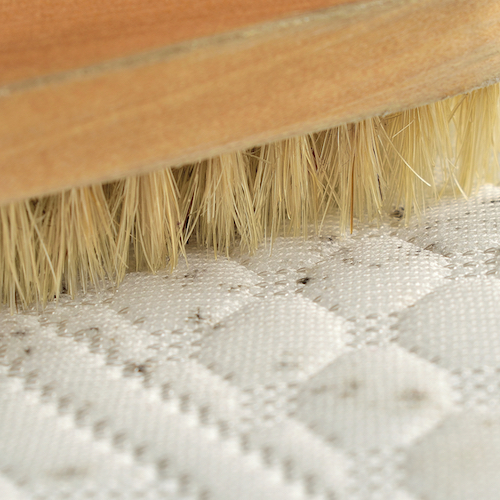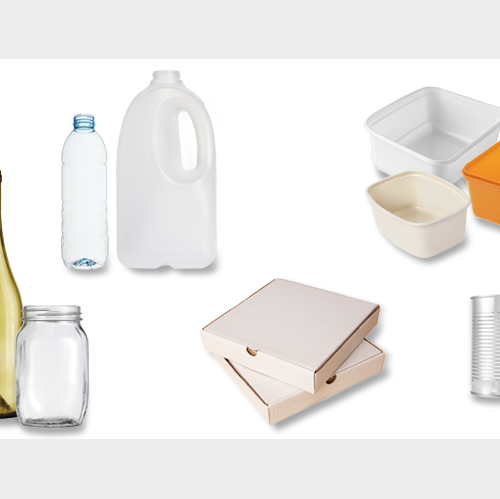
Yesterday I got three types of tomato planted out: Money Maker, which is one of my favourites as it usually grows well and has an abundance of tasty medium-sized fruit; Beefstake for a more meaty tomato; and Yellow Tumbling Toms for a bright dash of yellow in my summer salad.
Because it has been so wet already this year I’m expecting blight to be more of an issue. Luckily, there’s some great info on how to keep it away in Wendyl’s book “Recipes For A Cleaner Life.” Here’s an excerpt and a three-ingredient recipe that works for blight and blossom rot.
“Traditionally the time to plant out tomatoes is Labour Weekend, when all risk of frost and inclement weather is over. In some areas of the country blight and rot are big problems for tomatoes as they ripen due to high humidity. Here are some old-fashioned tips for producing blight-free tomatoes which I have tried and can attest that they really do work.”
 Three of my plants happily growing with a few chives that popped up from last season
Three of my plants happily growing with a few chives that popped up from last season
Buy some copper upholstery nails or some cooper wire from your hardware store. When your plants are about 10cm high place the nail or wire through the centre of the stem of your plant about 5cm up from the ground. The copper helps to keep blight at bay
When planting, sprinkle a mix a mix of 1 tbsp milk powder with 1 tbsp sulphate of potash in the hole before you put your seedlings in.
Buy plants which have been grafted onto disease-free stock.
Train your plants over old umbrellas which have had their fabric removed to reveal the spikes. This will form a lovely canopy which allows air to circulate between the plants.
Blight Spray for Tomatoes (also good for blossom rot)
1 spray bottle
1 cup powdered milk
4 cups warm water
Mix the milk and water together until fully dissolved. Spray on any tomato plants that are showing signs of distress, such as fungal infection or blight. Do this weekly or until the fungus is completely gone.
Tips for growing tomatoes in New Zealand, from Stuff.co.nz
Find out the best tomatoes to plant for NZ conditions – read the full article here
• Don’t transplant tomato seedlings until Labour Weekend. The weather is too unsettled until then.
• Tired of tasteless tomatoes? Try “dry farming” (halt all watering once the fruit is forming) or give them a splash of sea water. Research at Rutgers University in the US found that tomatoes given a one-time drench with 1.5 litres of sea water (or 4 teaspoons of salt dissolved in the same volume of water) tasted better and also ripened up to 15 per cent faster.
• F1 hybrids are the work of plant breeders. They are the first generation raised by cross-pollinating two different types of tomato. You can save your own seed from F1 fruit but when they grow the following season they won’t necessarily turn out the same (be “true to type”). But open-pollinated tomatoes, such as heirloom varieties, are more stable and will look like their parents.
• Indeterminate varieties grow as tall vines. They keep growing and produce fruit until the first autumn frosts kill the plants off, whereas determinate or bush types are more compact with a strong central leader. They don’t need as much staking but fruit for a shorter season.
Tips for growing tomatoes in containers
• If you want to grow tomatoes in pots, choose varieties bred for this purpose. Stick to cherry tomatoes, tumbling tomatoes and determinate or bush tomatoes. Most are quick to crop within 120 days from seed.
• Take your pick from ‘Tumbling Tom Red’ (Egmont Seeds) or its cousin ‘Tumbling Tom Yellow’; ‘Tiny Tim’ (Yates); ‘Balcony’ (Egmont Seeds), ‘Container Choice Red F1’ (Kings Seeds) or ‘Patio F1’ (Egmont Seeds).
• Aim for non-permeable pots at least as big as a 10-litre plastic bucket (for a single plant) or cut holes in a 40-litre bag of potting mix and slip seedlings straight into it.
• The main challenge is always watering. Tomatoes in hanging baskets need a good soak twice a day; an automatic irrigation dripper is best. Never water the foliage. Use a potting mix that includes a wetting agent.





About The Author: Grant_admin
More posts by grant_admin